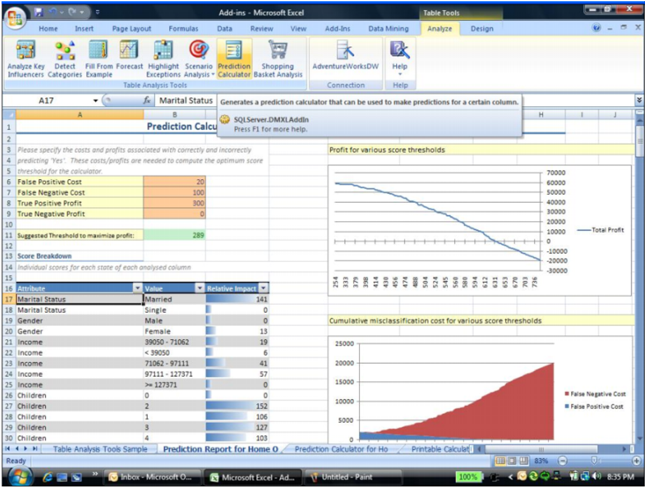SQL server
SQL Server is an enterprise relational database from Microsoft. The first version was released in 1989, followed in 2008 by SQL Server 2008 with different variants.
The SQL Server Enterprise Edition has all the features of the database and can be operated with an unlimited number of central processing units( CPU) and random access memory( RAM).
The SQL Server Standard Edition offers less features than the Enterprise Edition. Another limitation is a maximum of 4 CPUs, but the RAM has no limitation.
The SQL Server Workgroup Edition is designed for data warehousing and reporting at outsourced locations, as synchronization and administration can be done remotely. Hardware limitations are 2 processors and a maximum of 3 gigabytes( GB) of RAM.
SQL Server Web Edition has been made available for Web hosts and Web sites.
Like the Enterprise Edition, the SQL Server Developer Edition offers all the features of the database. However, according to the license agreement, this software may not be used for productive operation, but only as a test and development environment.
The SQL Server 2008 Express Edition is a free, but heavily restricted version for only one central processing unit and a maximum of 1 gigabyte of RAM.
The SQL Server Compact Edition is also free of charge and is suitable for operation on desktops, end devices with Windows Mobile or tablet PCs that do not depend on a permanent connection to the server. This version is limited to hardware of 2 megabytes( MB) of memory and 5 megabytes of RAM.
Working with SQL Server
The Microsoft SQL Server 2008 is suitable for the operation of business-critical applications and processes different types of data such as XML, e-mail, organizer functions such as appointment and calendar data, Office documents as well as sensor and geo data with location information and spatial coordinates. Data changesare also recorded in separate tables for later analysis.
The central services of Microsoft SQL Server are the search, query, analysis, report generation and synchronization of relational data and unstructured information. The physical limit of 8,000 bytes for user-defined types (UDT) has been removed. By compressing data and its backups, users get more system performance with lower storage requirements.
For mobile devices that are only intermittently connected to the corporate network, end-to-end synchronization was developed to synchronize data from different applications, storage locations, and data types. Even unstructured documents and image files can be stored efficiently and retrieved quickly using full- text indexes.
Reports and evaluations
A central function of Microsoft SQL Server is the provision of business intelligence( BI), i.e. the retrieval of correlations and trends from individual data and file inventories.Reports can be created, managed and retrieved in any complexity. The customizable layouts can be enhanced with charts and diagrams in an environment familiar from Microsoft Office. By extrapolating time series, predictions for business contexts are also possible.
Data security of the SQL server
New features include transparent encryption of entire databases and improved audits for compliance with regulatory and general data protection requirements. SQL Server 2008 also enables improved database mirroring with automatic page repair and the addition of CPUs without hardware downtime (hot adds).

